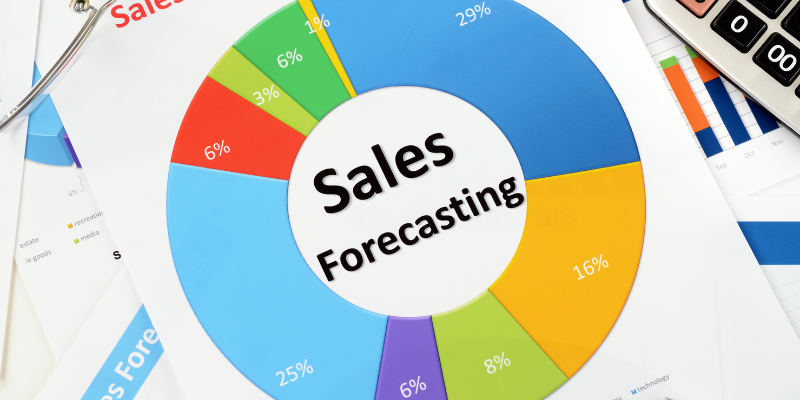By pipeline generation, you can have a group of leads ready who are highly likely to get converted.
With the pipeline generation process, companies have a clear idea of how many prospects they have in the pipeline. It also helps the sales teams understand where they should focus to get better results.
Read on to learn more about pipeline generation and which strategies to implement for better sales and ROI through the pipeline generation process.
What Is Pipeline and Pipeline Generation
Pipeline generation is the process of creating a sales pipeline for your organization. It includes activities like attracting possible prospects and making them a part of the pipeline. This pipeline is usually visualized horizontally. It helps the sales team to track the leads, interact with them, and forecast the sales. This also helps salespeople to view the position of their money and other sales efforts at all times.
During sales pipeline generation, you also nurture them to help them go through the stages of the sales cycle.
Pipeline generation is an upgrade to lead generation that aims to attract leads with a higher readiness to buy. It prioritizes lead quality to ensure that the organization has a steady flow of opportunities.
Key Components of Pipeline Generation

#1. Prospecting
Prospecting is an essential step of the process that helps you build a pool of interested customers. Here, you perform market research to identify potential customers. You also reach out to people through inbound and outbound strategies. FindThatLead, Reply, and Leadfeeder are some noteworthy software for prospecting.
#2. Lead Qualification
Lead qualification means assessing leads based on their predefined criteria and scoring them to categorize. Thus, the sales team can allocate their resources to the leads with maximum potential for conversion. Prospect.io, Chili Piper, and Exceed.ai are some popular tools you can use for lead qualification.
#3. Lead Nurturing
Lead nurturing is the process of building a lasting relationship with potential customers. Here, the objective is to guide them through the pipeline or funnel using relevant and personalized content. Companies can use sales automation tools like Pipedrive, Hubspot, and Salesforce to nurture their leads.
How Pipeline Generation Is Done

Lead Generation
Lead generation is the first stage of pipeline generation for generating leads. You need to make them aware of your brand and products so that they know that you are able to fulfill their needs. You can generate leads through paid or unpaid campaigns on social media, cold emails, cold calling, content marketing, referral marketing, and other inbound strategies.
Lead Qualification

As you gather leads into your sales pipeline, not all of them have the same chance of buying your product. This is why lead qualification is a crucial stage of the pipeline generation process. You attribute a score to each lead and categorize them. This enables sales executives to understand where they should invest their time and effort.
Lead Nurturing
At the lead nurturing stage, you build a relationship with the prospects. You need to find out how your products can meet the necessities of the leads and present the solutions to them in different modes.
Schedule a Meeting or Demo

As you can convince the leads about the capability of your products and services, it will influence them to schedule a demo or meeting with you. In the scheduled meeting or demo stage, you negotiate the deal to sell the product.
Negotiation
Now, when the leads show interest, you must negotiate the deal. You must converse with the decision maker about price, services, conditions, and any other points involved in it.
Seal the Deal
Seal the deal is the final stage of pipeline generation when the sales reps ask for the sale. Even if they do not close the deal, you must continue to nurture them till they are ready. You can use these sales pipeline templates to track the status of your leads.
Benefits of Pipeline Generation in Sales
Target the Most Qualified Prospects for Your Product
With pipeline generation, companies can identify and prioritize prospects that are most likely to convert. There is scope for analyzing data and behaviors to tailor an approach to engage with them. This maximizes the efficiency of sales efforts and prevents you from wasting resources on less promising leads.
Nurture Leads to a Higher Conversion Rate
The pipeline also allows businesses to develop relationships with potential customers over time through systematic lead nurturing. Companies can maintain consistent communication by providing valuable content. Thus, leads become more informed and confident, leading to a higher chance of moving through the sales funnel.
Get More Accurate Sales Forecasting and Planning
If you have a well-structured pipeline, you can develop more accurate forecasting and strategic planning. It helps you track progress at each stage so that you can anticipate potential challenges and allocate the resources accordingly.
Make Educated Decisions About Resource Allocation
Proper resource allocation is crucial for business growth and ROI. A comprehensive pipeline helps businesses make informed decisions about budget allocation, staffing, and technology investments. As a result, companies get a deep understanding of resource utilization at different stages of the sales funnel.
Granular Visibility Into Team Performance
Organizations can also utilize the pipeline for granular visibility into employee performance. Managers can track the KPIs at each stage to find out how the individual team members and the sales team as a whole are performing. This not only enables them to identify the team’s strengths and weaknesses but also ensures that the team operates at its highest potential.
Ensure More Personalized Interactions With the Leads
A well-structured pipeline is all you need to collect and analyze data about leads for highly personalized interactions. Once you know what the prospect prefers and what their pain points are, engaging communication can take place between the sales team and the prospects, increasing the chances of successful conversions.
Strategies for Effective Pipeline Generation

Just like the lead generation strategies, you should also follow the pipeline generation strategy for effective results. If you want to generate a solid pipeline for your sales and marketing teams, here are the strategies you should implement:
#1. Be Aware of Your Business Target
Not everyone can be part of your pipeline. Sales executives should be aware of the business objectives and try to include the leads with the maximum chance of conversion in their pipeline.
For example, if a company’s target is to get more subscribers, they must try to create a pipeline generation strategy that could bring in more solvent customers.
#2. Focus on Their Quality Instead of the Quantity
While you are generating a pipeline, always focus on the quality of the pipeline instead of the quantity. Only good-quality leads will increase your chances of getting converted into customers, and a large number of leads of inferior quality will not benefit the company. For instance, 10 good quality leads are better than 20 leads or poor quality.
#3. Get Lead Insights for Personalized Campaigns
For every prospect in the pipeline, companies should collect detailed personal information. This will help you develop personalized marketing campaigns that focus on their pain points and the product’s ability to resolve them.
You can deliver troubleshooting videos and podcasts to prospects interested in multimedia content, while people interested in influencers will find campaigns done by affiliate marketers to be intriguing.
#4. Creating an Effective Content Strategy
Businesses can create informative and relevant content to establish themselves as an industry expert and attract leads to get into the pipeline. The content could be a blog, podcast, or video that addresses the pain points of the target audience.
For example, if your target audience persona is more interested in video content, you should create more reels and videos for marketing.
#5. Optimize Website and Landing Page
Your website and landing pages are the gateways to the pipeline. These should be optimized to attract the maximum number of leads. Add a CTA button to your landing page around the place where most visitors focus. You can use webpage heatmap software to locate those areas.
#6. Monitor Your Current Pipeline Generation Policy
You must determine the KPIs for your business to measure the performance of your current pipeline generation policy. After you finalize your business goals, find out which KPIs can signify its success and monitor them. Based on the results, you can tell if your pipeline generation policy is successful or not and take your next steps accordingly.
Challenges in Pipeline Generation

Keeping Sales and Marketing Aligned
Aligning the goals of your sales and marketing team is always difficult. Therefore, both teams should understand each other’s objectives and work in sync for better results.
Nurture the Leads
Lead nurturing is important as it allows you to build trust with potential customers through emails, newsletters, and other content. However, proper lead nurturing is a time-consuming process that needs a deep understanding of customer behavior.
No Using Necessary Tools
Not using relevant tools for pipeline generation will make the process slow and cumbersome. Hence, companies need a powerful and feature-rich CRM to store information about leads and prospects.
Adapting to Evolving Market Trends
Market conditions change over time due to changes in customer behavior or competitors’ strategies. For any company, adapting to these market changes is not easy.
Leakage in Pipeline
Leakage in the sales pipeline means losing leads before they become your clients. It also means missed opportunities and reduced customer loyalty. To avoid this, you must emphasize lead nurturing.
Getting Reliable Forecast

Sales strategy and pipeline highly depend on forecasting, but getting reliable forecasting is always a challenge. Companies need to collect conversion data and use trusted applications to get accurate forecasts.
Lack of Follow-Up
You need to continuously follow up on your leads unless you want them to go cold. An unorganized tracking system is often responsible for that. So, you must have a reliable CRM to keep your leads organized and track them for regular follow-up.
Getting Responses
To advance in the pipeline, a lead has to respond to your initiative. However, getting a response from them is challenging. Your content needs to be personal and relevant to get a reply.
Pipeline Optimization
Another challenge for pipeline generation is continuously optimizing it. As market conditions and customer needs change over time, your pipeline strategy must also evolve accordingly. Both the sales team and the organization should be observant and optimize their processes.
Case Studies
#1: Smartly.io
Smartly.io is a social media marketing company that increased its pipeline generation through the quick identification of contact data through a global prospecting platform. By focusing on high-value sales activities, its average deal MRR increased by 40%. It also monitored target accounts for sales triggers so that they could send sales emails to prospects in seconds. As it switched to a proactive sales approach, its outbound pipeline generation increased from 5% to 70% in two years.
#2. Blackbaud
Blackbaud is a SaaS-based company that created dedicated campaigns for each account, addressing their specific needs. However, they chose to begin with only the display ad for account-based marketing.
Thus, they increased the number of engaged target accounts. Later, they focused on three highly targeted campaigns: prospecting, cross-selling, and previously lost deals. Their highly relevant messaging is directed to a specific persona, resulting in a 10x ROI on pipeline generation.
FAQs
The pipeline generation process in sales and marketing means identifying, nurturing, and converting the leads as they move through the stages until they make a purchase.
A funnel represents the customer journey from awareness to conversion, while a pipeline represents the structured steps and activities in the sales process. A sales funnel presents a broader view of customer engagement, and the sales pipeline focuses specifically on the progression of deals.
The stages of a sales pipeline are lead prospecting, lead qualification, meeting, proposal, negotiation, deal, and post-purchase.
Final Words
Pipeline generation is not an easy task for a sales team. However, it is absolutely necessary to have it to close more deals. In this article, we discussed the concept of pipeline generation and its related aspects.
Following this guide, you can generate a pipeline for your company and improve the process with the strategies mentioned here.

